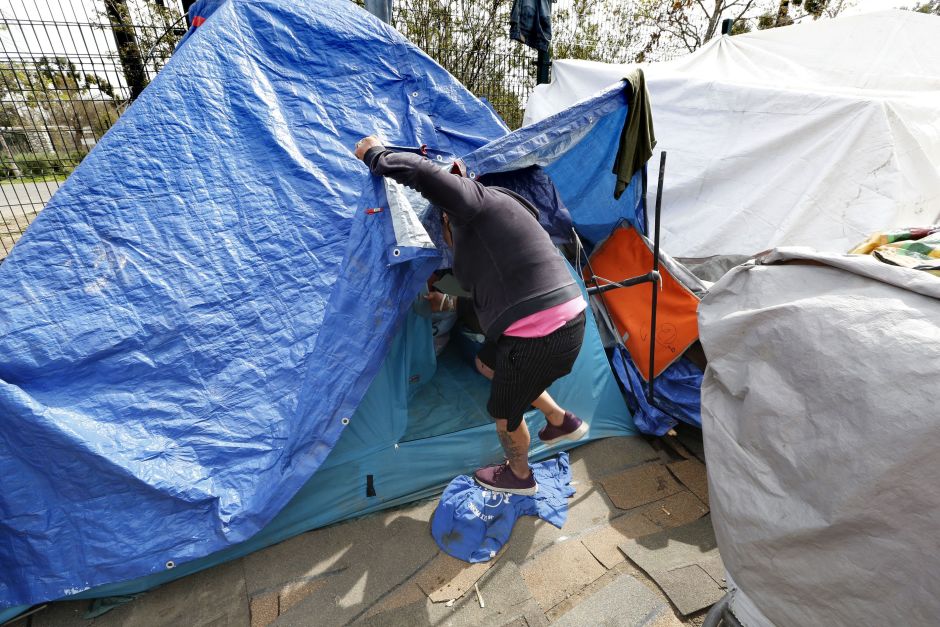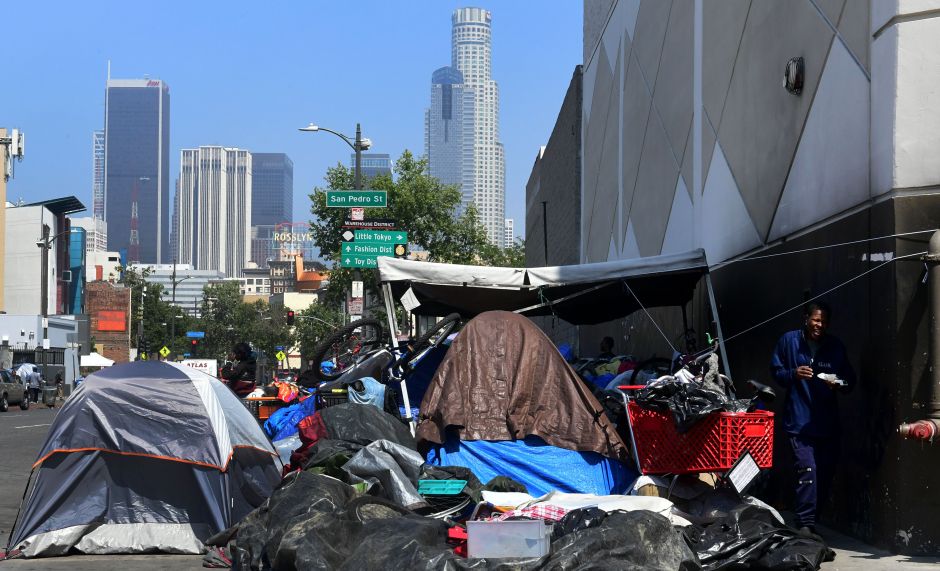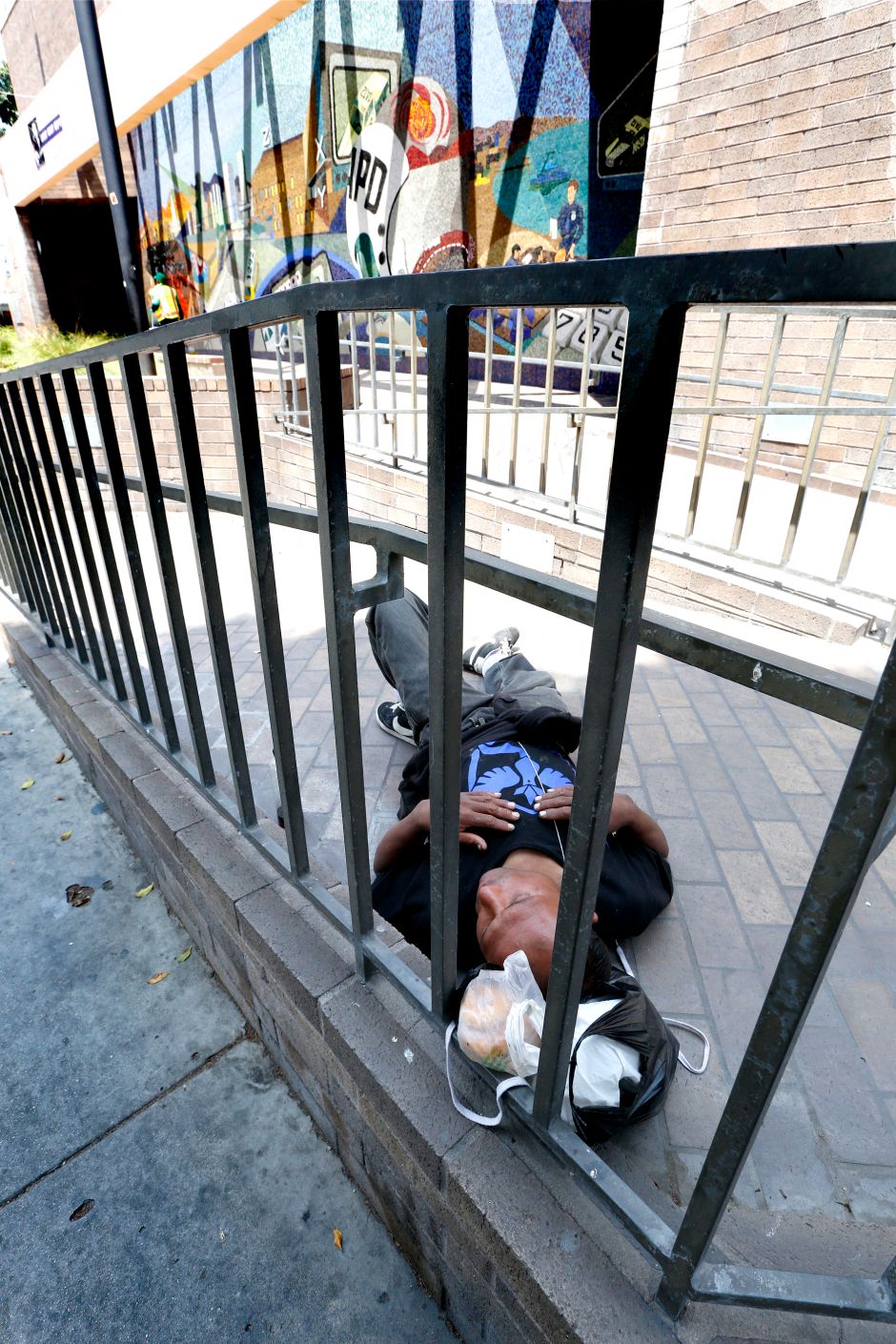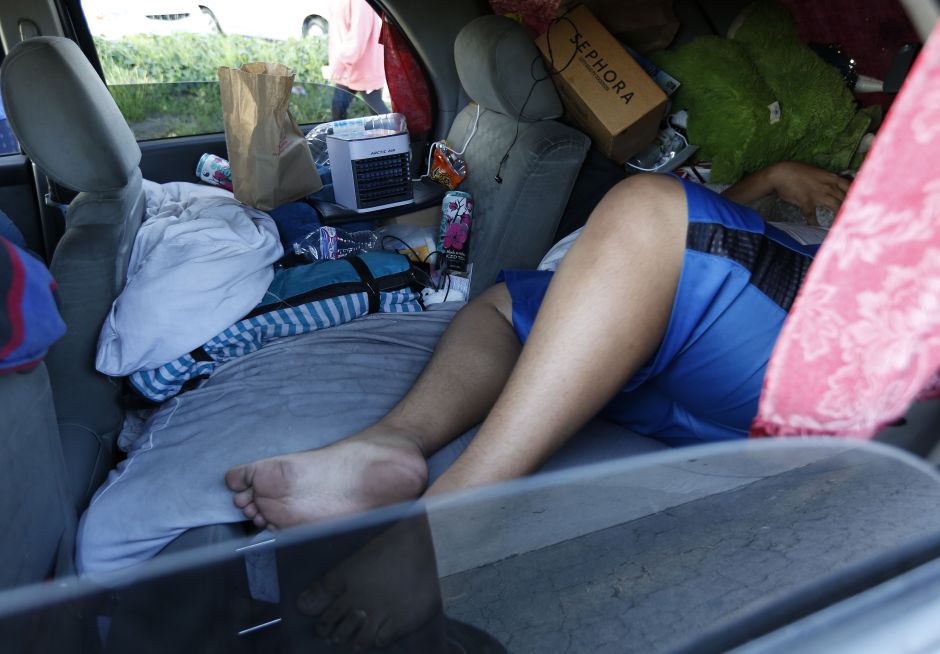The shortage of affordable housing and the stratospheric rent increases have thrown many families into the street
This is a five-part series that shows some of the reasons and faces of people suffering from the homeless crisis that is currently in Los Angeles. Reporter Araceli Martínez searched and visited some of the camps, cars, and places where currently 60,000 homeless people in LA County take refuge.
Gabriela is 32 years old and for a year, she and her family of Salvadoran origin live in their three old vehicles that park in a park in the Watts neighborhood south of Los Angeles.
“When my father suffered a stroke in 2017, he became disabled. At 59 he could no longer work. We had to leave the house we rented. My mother's salary was not enough to pay the rent of $ 2,000 a month. We used to pay $ 1,800. Then they raised us $ 200, ”says the girl.
Despite the measure H that has allowed for two years, doubling the number of people leaving the streets to go to a home, the count of homeless people in 2019 made by the Authority for Homeless Services (LAHSA), gave know that 58,936 people do not have a home in Los Angeles County. This is a 12% increase over last year. The city of Los Angeles experienced a 16% increase in the number of homeless people. Now they have 36,000.
The most relevant of the last census is that it revealed a 17% increase in homelessness among Latinos in Los Angeles County, which puts the Latino community with the highest number of homeless people, displacing African Americans who usually occupied the first place. 36% of all homeless people are Latino.

In general, There is a significant increase in homelessness among young people, families, women and transgender people.
Mayor Eric Garcetti laments the rise of helplessness among Latinos. “In the past they were mostly African Americans. Now, homelessness is a crisis in our community, a reflection of poverty and insufficient housing, ”he acknowledges.
However, he believes that there is hope, since they work on more than 150 new housing projects for low-income people and those who live on the streets.
"To prevent homelessness, it is my goal to have housing projects in Pico Union and the Northeast of the San Fernando Valley, where there are many Latinos," he says.
In an effort to prevent the growth in the number of homeless people, he says he managed to raise the minimum wage and created a legal representation program for those who are threatened with eviction in the city and the county.
“We need state legislation so that incomes do not increase up to 40 and 50% in one year. That will also help us avoid homelessness, ”he says.
This year's count revealed that 23% of homeless people living in destitution. That is, 9,200 people were left homeless for the first time in 2018. The majority, 53%, cited as cause the economic difficulties as in the case of Gabriela.

Auto and home
The three vehicles in which your family is distributed to sleep are parked one after another, as a protection.
Gabriela, her 15-year-old brother and her pet, the cat “Garfield” sleep in a vehicle. His father and mother each rest in their own car.
"My mom works as a housekeeper for a chain hotel on an Orange County beach," he says.
In the same car that the mother sleeps, she travels every morning for an hour and a half to work. “He leaves at 10:30 in the morning, returns at 11 at night. There in the hotel he bathes and eats, ”he says.
The old cars where they sleep are full of their personal possessions. Blankets, pillows, clothes, food cans and some personal hygiene products. Gabriela's little brother entertains himself with a small laptop.
Gabriela says that she does not work to stay in the care of her father during the day, since they cannot leave him for a long time alone, because she has trouble locating. The embolism has left sequels in the right part of his body.
“I studied astrophysics until the third year at UCLA, but I no longer followed. Now I have to take care of my dad and my little brother, ”he says.
He says that they lived in a rental house until they were evicted on August 14, 2018. “We raised the rent from 1,800 to 2,000 dollars a month. With just one salary, we couldn't pay it anymore, ”he explains.
In this year they have lived in their vehicles, they have tried to look for rental houses, but when they investigate their credit history they are automatically discarded.
“They also want one to earn two or three times more than the amount of the rent,” he says.

The difficult street life
Living on the street has been very hard for this family. “My little brother is the one who has been most affected. It's not fair to him, ”says the sister.
Many single men and homeless families live in Watts Park. The majority of the homeless are African-American, but there are at least two Latino families. A Latin couple who lives with their two minor children in their car for months, does not want to talk. They are distrustful. They are not interested in telling their drama.
Hopelessness and tiredness can be seen on their faces. The young father of Guatemalan origin works in construction. She takes care of the two children and when the husband returns from work, the woman works hard to prepare food on an outdoor grill and they sit down to eat at a stone table in the park. When finished, they return quietly and meditabundos to the car.
Gabriela says that they have tried to find a home through section 8, but waiting lists mean long years.
“They offered us to go to a shelter, but we didn't accept because they wanted to separate us. We prefer to continue on the street to be separated, ”he says.

So far the police have not bothered them. “The neighbors do look weird when they walk or run through the park. They judge you without knowing, ”says Gabriela.
In the evenings, families and people who sleep in their vehicles hang towels or other clothes on window panes so that nobody bothers them or snoops inside cars while they rest.
"The neighborhood in general in this area is safe, although sometimes shooting is heard," says the girl.
Like the other families, they prepare their food in small stoves. "When we can, we buy some ready-made food," he says.
They use the toilets of the park, but as they close them early, if they have an emergency, they choose any dark corner to dislodge the intestines.
"The most difficult thing to live on the street is to endure the weather, when it rains, when it is very cold or very hot and the breeze does not run," he says.
Gabriela recognizes that living on the street has left their morale on the floor.
“My mom is the backbone of this family. Although he worries, it is he who gives us courage and lifts us, ”he says.

Solutions
The crisis response system for homeless people helped 21,631 move to permanent housing last year. 92% of people placed in permanent housing in 2016 and 2017 remained housed until the end of 2018 and did not return to homelessness.
Unfortunately, while thousands were getting a home, thousands more remained in the street.
"Our ability to reach, serve and accommodate homeless people has greatly increased since voters made unprecedented investments in our homeless services system in 2016 and 2017," says Peter Lynn, executive director of LAHSA.
But he recognizes that the regional crisis of access to housing continues to lead thousands of people to poverty.
"It is essential that we work with members of the local community and all levels of government to increase affordable housing, limit rent increases and prevent unfair evictions, while continuing to expand and refine our system," he adds.
According to the California Housing Partnership Corporation, Los Angeles has a shortage of 516,946 units for low-income tenants. The ability of the rich and the poor to pay for housing has varied: since 2008, the housing expenses of higher income residents have fallen by 2%, while the housing expenses of those with lower incomes have increased by 14% .
California has the highest number of people in poverty of all states, and Los Angeles County has the highest poverty rate with 24.3%.
On Wednesday, look for the second of five parts: The new face of helplessness, professionals who live in their cars.





![[Replay] Master all your options for your 401 (k)](https://californialines.com/wp-content/uploads/2020/09/Replay-Master-all-your-options-for-your-401-k-100x70.jpg)



